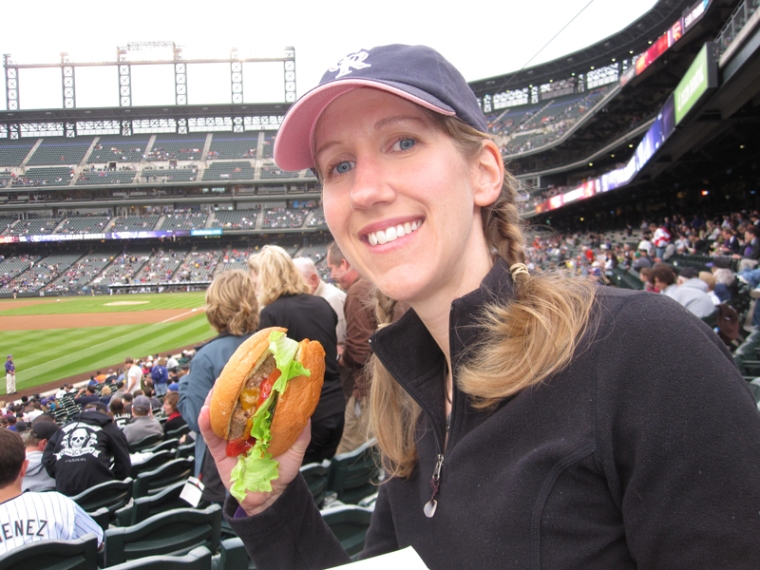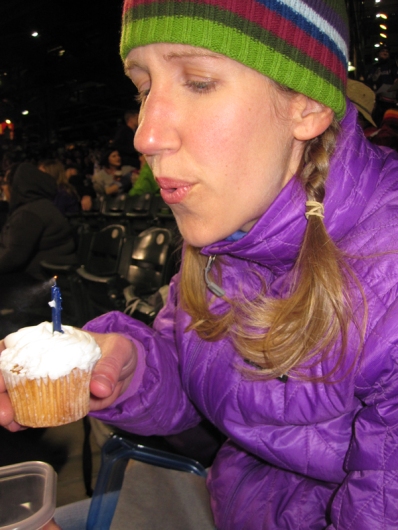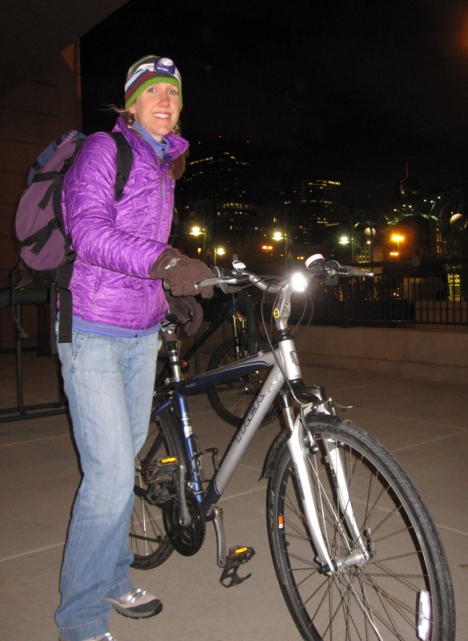I have a brand new goal to work toward for next summer: a climb of Mt. Rainier (14,411 feet) in Washington’s Cascade Range. Ever since Doug and I backpacked on the lower forested flanks of Mt. Rainier on the Wonderland Trail when we were in college, I have wanted to try the peak. Doug and I had talked of doing it a couple years ago with his Dad, but my illness and surgery delayed those plans. I am ready to dust off this dream, and the three of us will finally give it a go.

Though Doug and I rock climb a lot, we do not have experience on peaks with large glaciers (and Rainier is the most heavily glaciated mountain in the Lower 48). We know it would be too dangerous to try Rainier on our own. Therefore, we will be doing the ascent with a guide service, International Mountain Guides (IMG). This company leads mountaineering trips all over the world and has some of the best guides in the business.
As it turns out, one of the owners of IMG, Phil Ershler, has Crohn’s disease. He and his wife, Susan Ershler, wrote the book Together on Top of the World. The book describes Phil’s challenges with Crohn’s disease and colon cancer and tells the story of the couple’s journey to climb the highest peak on each of the seven continents despite these odds. I went to see Phil and Susan speak in-person in Boulder shortly after they released their book in 2007. This was roughly a year after I had been officially diagnosed with ulcerative colitis, and I was scared of what my recent diagnosis might mean to my outdoor adventure-filled life. Their words gave me much hope. I read their amazing book shortly after hearing them speak and was further inspired.
As we started to research our climb with IMG, I emailed Phil to find out if he felt that any of the Rainier trips were feasible with my ostomy. The last thing I wanted to do was get excited about a trip only to find out I might be denied due to my medical condition. I was candid about the extra challenges I now face after ileostomy surgery, but Phil was very encouraging and suggested the route he thought might work out the best. He also warned me that Rainier trips fill very quickly and to get our application in as soon as the 2013 dates were published.
He wasn’t kidding. We knew the trip dates would be published while we were on our climbing road trip, so we were driving into town from our camp every other day to find a place to connect to the internet and check. Turns out the dates were published on the one day we didn’t get to town. By the time we checked the following day, there was only one trip left with three openings during the month-long window of time we wanted. Thankfully we secured our spots!
Before being officially accepted on the climb, the guide service emailed me with more specifics on the route so that I knew what I was likely to face on the mountain. Among several challenges, the ascent to high camp involves carrying a 40-pound pack for five miles with 5,000 feet of elevation gain. The final day of the route includes a five- to six-hour ascent to the summit and then a descent all the way to the trailhead. This means a round-trip travel time for that day of up to 16 hours. I had been very open on my application paperwork about my ostomy and the challenges it can present (such as dehydration and my limitations of carrying super heavy loads). The staff wanted to make sure the conditions of the climb seemed doable to me. IMG was super accommodating and helpful about it all and explained some steps I could take to help meet my hydration and pack-weight needs within the confines of the trip. They were even set up to deal with my gluten-free diet.
After carrying a 40- to 55-pound backpack on several trips since surgery, I was sure that I could handle the load on this climb–especially with time for additional training. Just as I carried extra water on some long all-day climbs this summer, so I would on Rainier. I already had a lot of experience swapping out my ostomy pouches in frigid temperatures and with a harness on. I had no concerns about that part of things. I was sure the climb was within my abilities, but I also had to get signed forms from my regular doctor and surgeon stating that they approved of my participation. After outlining the specifics of the trip to them, neither had any reservations about me taking part in the climb. I was set to go!
It is just starting to settle in that I am actually going to be attempting Rainier. I can’t describe the excitement I am feeling for this adventure. The route that was recommended to me is the easiest one that IMG uses on Rainier. It is a three-and-a-half day trip starting at a beautiful place called Paradise (5,400 feet). We will carry our loads to Camp Muir (10,080 feet) and then move on to a higher camp at the Ingraham Glacier the following day. On the final day of the trip, we will attempt the summit (conditions permitting) and descend to the trailhead. Pack weights are less on this route than most others because some group gear is kept at the already-established camps.
I have to admit that I was really drawn to do one of the longer or more remote Rainier trips described on IMG’s site like the Emmons Glacier climb or even a six-day seminar that includes a lot of technical skill instruction plus an ascent of the peak. In my mind, I am still the woman who has gone on several 30-day backpacking and mountaineering trips into the remote wilderness carrying 75 pounds of gear on my back, but I have to acknowledge that my body has changed since then. I am still learning what it is capable of after surgery and this trip will be a perfect test. I am fully confident that it will be strong enough for this route, and after that, who knows? Maybe I will want to do a longer or more difficult trip on Rainier or another peak down the line. Right now, I am ecstatic to have the chance to take part in this climb.
Let the training begin!




